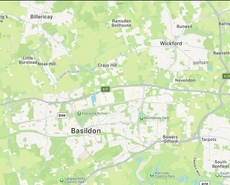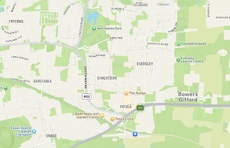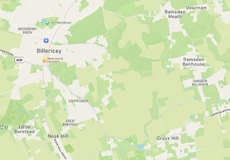- Home
- About Us
- News & Events
- The Parishes
- The Heritage Centre
- Maps & Transport
- Educational Resources
- Social Media Channels
- Listed Buildings & Structures
- Research Documents
- Archive Downloads & Podcasts
- Member Publications
- Fundraising
- Sponsors & Alliances
- Contact Us
- Find Us
- Shop
- Blue Plaque Installations
- Blog
Basildon Borough Parishes
Basildon Billericay Bowers Gifford Dunton (part) Great Burstead Laindon Langdon Hills (part) Little Burstead Nevendon North Benfleet Pitsea Ramsden Bellhouse Ramsden Crays Vange (including part of old Fobbing) Wickford
Basildon Borough Shopping Centres
Basildon Town Centre Billericay Laindon (when completed) Pitsea Wickford
Town Councils / Parish Councils
Billericay Bowers Gifford and North Benfleet Great Burstead and South Green Little Burstead Noak Bridge Ramsden Bellhouse Ramsden Crays Shotgate Wickford
Basildon Borough Neighbourhoods/Estates
Beechwood Village Chalvedon Felmores Five Links Fryerns Felmores Great Berry King Edwards Kingswood Langdon Hills Lee Chapel North Lee Chapel South Nethermayne Pound Lane Pitsea Shotgate Queens Park South Green The Badgers Westley Green
The Parishes
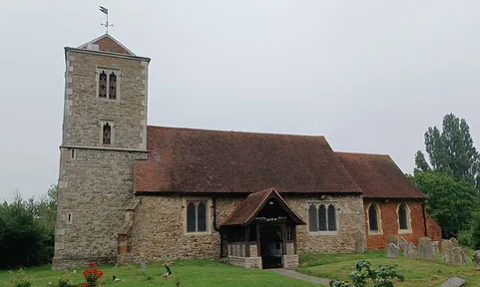
Basildon
It would appear that Basildon was chosen for the name of the new town, because it was the most central parish within the selected development area, although it was insignifcant compared to some of its neighbours, Laindon, Pitsea, Wickford and Billericay - all thriving towns.
Therefore to many, Basildon appears to be relatively new but it is in fact a very old parish. The name is derived from the Anglo Saxon name 'Boerthal Hill'. Don (duna) is Anglo Saxon meaning 'hill' and Boerthal is a personal name.
The Domesday Book of 1086 spells the name as 'Berlesduna'. So Basildon is not sixty years old but well over a thousand years old.

Billericay
Unlike many of the other parishes in the Borough of Basildon, Billericay is not mentioned by name in the Domesday Book.
There is no doubt that a small village or hamlet existed in the area of modern day Billericay since before the Romans but at the time of Domesday it was engulfed by the parish of Burstead.
In fact it does not get its first mention until 1291 as 'Byllyrica' which appears to be either derived from the medieval Latin word 'Bellerica' meaning 'dye-house' or 'tan-house', or the Persian word 'Balilah', a tree fruit myrobalan used for dying, hence 'dye-house'.
Whatever word it is derived from it still comes back to the same meaning - dye-house. Does this mean that one of the main industries in the area was dying?
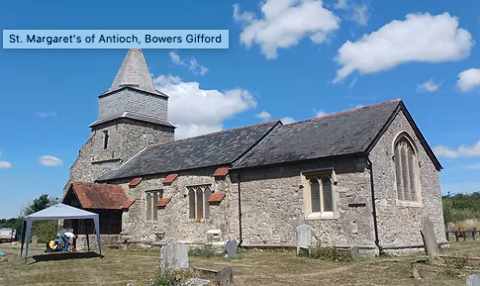
Bowers Gifford
The name Bowers comes from the Saxon 'Bura' meaning dwelling or dwellings.
It was first mentioned in 932 when King Ethelstan grated 10 hides in Bura to abbot Beorhtsige.
Gifford was added several centuries later when the manor is granted to the Giffard family who were descended from the maternal line of William The Conqueror.
Sir John Giffard fought at Crecy in 1346.

The Bursteads
The name Burstead comes from the Anglo Saxon 'Burhstede' meaning 'a fortified place'.
We are not really sure where the fortification was but it is believed to have been in the vicinity of Great Burstead Church, St Mary Magdelene.
Before the Norman Conquest Earl Godwin held the area we know today as Little Burstead, the father of King Harold. Great Burstead belonged to Inqvar a thane.
Following the conquest and at the time of the Domesday Book, Little Burstead was in the ownership of the Bishop of London, whilst Great Burstead was in the ownership of Ode-Bishop of Bayeaux the half brother of William The Conqueror.

Dunton
The name Dunton Wayletts is taken from the Anglo Saxon for Hill Town or settlement on or at a crossroad or path.
Today we only refer to the parish of Dunton but forty years ago the spot on the Arterial Road (A127) where the Ford Dunton flyover now is was known as Dunton Wayletts.
At the time of the Domesday Book Dunton was in the hands of Ode-Bishop of Bayeaux - 'Duntuna'.
Dunton in recent years has become well known for the Plotland development that took place in the Basildon are during the early 1890's.
Dunton was the last of these developments.
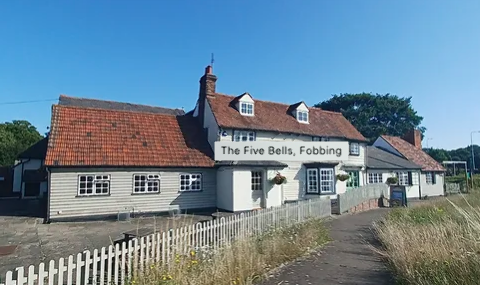
Fobbing (Vange)
The parish of Fobbing north of the A13 has been absorbed into the Borough of Basildon. The northern section of the old Parish prior to the coming of the Basildon Development area butted onto Langdon Hills to the west, Vange and Basildon to the East and Lee Chapel/Laindon in the North.
To help you get your bearings the northern tip of the old parish includes Basildon Hospital and St Lukes Hospice as originally Fobbing Farm.
The name is of Saxon origin, possibly derived from a personal name, meaning 'the settlement of the people of Fobba'. It has, however, also been suggested that it might have been derived from one of the many creeks in the area.
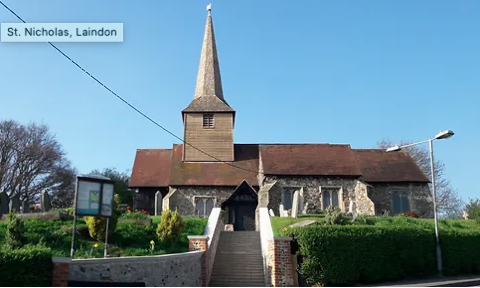
Laindon
The oldest known record of Laindon dates from 998 when one man from 'Ligeandune' was required for ship duty.
The Domesday Book records the name as 'Legenduna', with the parish being held by the Bishop of London.
Laindon means 'Hill by the Lyge'. The Lyge is believed to be a Celtic river name and 'Dun' is Anglo Saxon for 'Hill'.
The Lyge springs from the hill upon which St Nicholas Church stands and is a tributary of the River Crouch but the source has not yet been found.
St Nicholas Church was built in the 13th Century and is Grade I listed. Its most notable features are its Bell Tower and the Priest/School House on the West end of the church. It's 360 degrees views from the church is worth a visit alone.
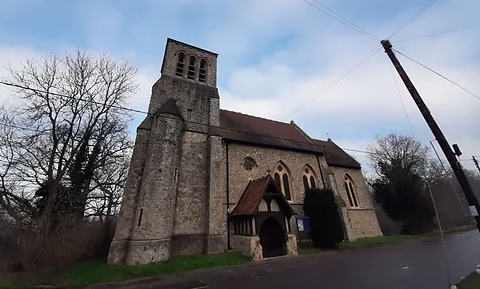
Langdon Hills
Langdon Hills appears in the Domesday Book as Langeduna, being derived from the Anglo Saxon meaning 'Long Hill', 'Lang' meaning 'long' and 'Dun', as we know, meaning 'hill'.
For some reason the two parishes of Laindon and Langdon Hills over the centuries have confused the historians.
Muilman, in his 'History of Essex by a Gentleman' written in 1772, refers to both being called Langdon.
Morant wrote in 1768, in 'History of Essex', as well as Chapman and Andre's map of 1777 refers to Laindon as 'Langdon Clay'.
At some stage it would appear that the authorities tried to clearly distinguish the two by adding 'Hills' to Langdon, which technically means you are now saying 'Long Hill-Hills'.
All that has happened is a further confusion, as people started to refer to Langdon Hills as Laindon Hills, and still do to this day.
The Crown Hotel was considered a lookout post if Napoleon lead the French to an invasion of England.
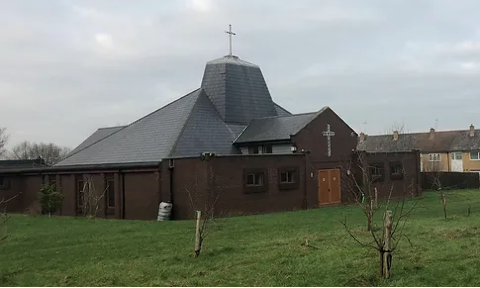
Lee Chapel
The parish of Lee Chapel links the two parishes of Laindon and Langdon Hills together, although the greatest influence and control over the centuries has been from Laindon.
Lee is derived from the Anglo Saxon 'Leam' meaning 'woodland' clearing and at the time of the Domesday Book was claimed by the King.
Chapel was added at a later date, the chapel was somewhere in the area near the junction of The Knares and Stanway.
In 1254 the Patron of Leye Chapel was a Robert Lee.
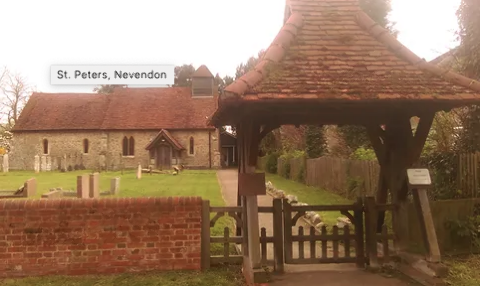
Nevendon
It was at Nevendon in 2008 that a Neolithic settlement was discovered just north of the A127. At least six houses were discovered of which two were of a Scandinavian type not often found.
The artefacts are currently being stored at Southend Museum.
Domesday records the name as 'Nezendena', Anglo Saxon for 'at the flat valley'.
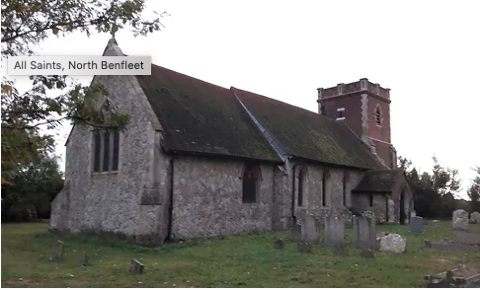
North Benfleet
North Benfleet is obviously the northern part of the old parish of Benfleet.
Benfleet gets a very early mention in the Anglo Saxon Chronicle of 894, which tells us the Viking fleet was destroyed at Beamfleote by the English.
Beamfleote means 'a creek inlet within the woods close by' or 'creek with timbers'.
There may have been a wooden bridge across Benfleet Creek.
Before 1066 King Harold held the land but following the conquest it transferred to William.
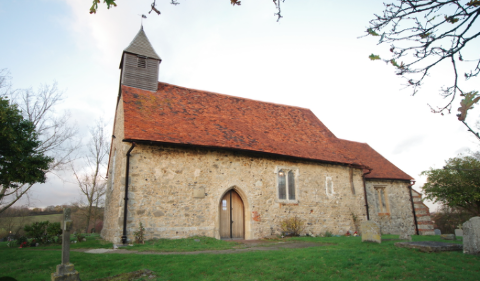
Pitsea
Very little is known of the early history of Pitsea, the earliest recorded name, which is in the Domesday Book, is 'Piceseia', a Saxon word meaning Island or low-lying land in marsh or Pics' Island, which refers to the area now known as Pitsea Mount.
Pic is possible the name of an old Celtic tribe.
There have been a great number of different spellings over the years including Pytchey, Pittessey, Pytsay, Pitchesey, Pisseye, Petchesey, Pithesey, Pikeseye and Pichesey.
The area of Pitsea today is made up of the five sub-districts of Pitsea Mount, Eversley, Felmores, Burnt Mills and Chalvedon.
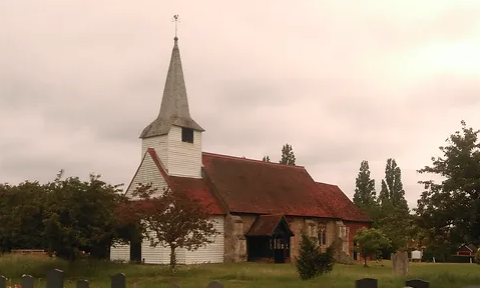
Ramsden Bellhouse and Crays Hill
The name, 'Ramsden', is believed to be derived from 'Ramasdena' (Domesday Book, 1086), meaning 'Little wooded valley of the ravens'.
It covers the parishes we now know as Ramsden Bellhouse and Ramsden Heath, and stretches from Stock in the north to Nevendon in the south, with Down and Wickford to the East and Ramsden Crays to the west.
The Belhus family moved to the area in the 13th Century and by the 14th Century it had taken on the name of Rammysden Belhous.
Ramsden Heath, in the borough of Chelmsford City, did not come into being until the early part of the 20th Century. It covers the area of the heath-land to the north of the parish.
At the time of the Domesday Book in 1086 the parish of Ramsden Crays was known as 'Windull', probably after a family of that name. It was not until the beginning of the 13th Century when it was also being referred to as 'Ramesdena'. This more of less coincided with the arrival of the de Crei family in to the village. Within one hundrerd years their name had been incorporated into the parish name, Rammysden Creys. Although the original name of 'Windull' was still occasionally being used right up until the early 16th Century.
If you visit the are and look at the village sign to the east end of the village you will see on one side the name 'Ramsden Crays', and on the other 'Crays Hill' At the other end of the village a large sign says 'Crays Hill' then in brackets' Ramsden Crays'. We are yet to find out why.
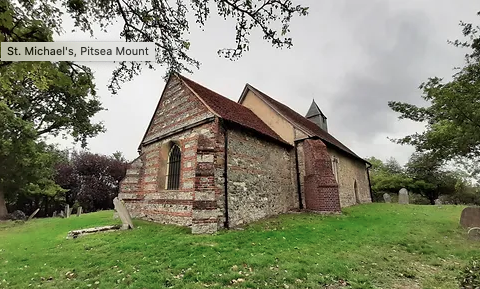
Vange
Vange tends to get linked with Pitsea but it is an old parish in its own right.
We first find a mention of it back in 963 when King Edgar sold Fengge to Thegn Ingeram who, the same year, sold Fenge to Dunstan, Archbishop of Christ Church and Canterbury.
It was spelt 'Phenge' in the Domesday Book and in the Saxon language 'Van' meant a 'fen' or 'marsh'. The suffix 'ge' meant 'district'.

Wickford
Wickford is Saxon in origin. Wick means either a winding river, or village, habitation, castle or dairy farm. Ford is a shallow river crossing, or as it has been suggested a 'sheep farm on a river crossing'.
The river Wick is a tributary of the river Crouch and right up until 1960 was prone to flooding.
The earliest reference we can find is in 980 AD when AEthelflaed, widow of King Edmund gave Wicforda to her kinsman Sibriht. However, we know that the town of Wickford was inhabited in prehistoric times and there was a considerable amount of Roman activity in the area.
The towns name has been written as Wickeford, Wyckford or Wygford.
There is a Wickford in Rhode Island, USA and it is understood that it got its name from a Wickford woman, Elizabeth Reade who married a Governor of Connecticut, John Winthrop.
Elizabeth's stepfather was a Hugh Peters who, although a Cornishman, became a schoolteacher in Laindon and possibly one of its curates. It is understood that a descendant of Elizabeth's is former US President George Bush.
Early History of Basildon
Please click above for more detail
